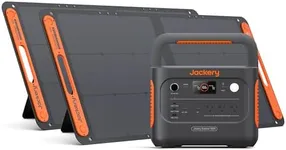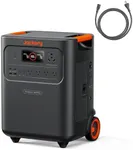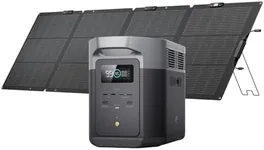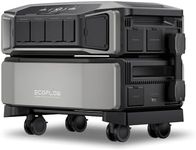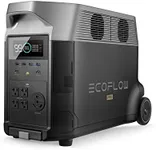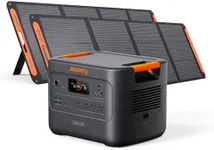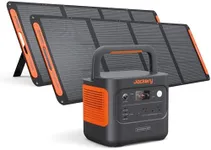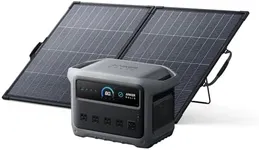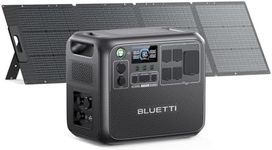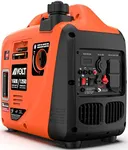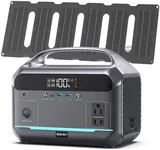Buying Guide for the Best Solar Generators
Choosing a solar generator is a smart way to ensure you have reliable, clean power wherever you go or in case of emergencies. To pick the best one for you, start by considering how you'll use it—whether that's for camping, powering tools away from home, serving as an emergency backup, or providing energy for everyday appliances. Your ideal solar generator should match your energy needs, be easy to transport if you plan to travel, and recharge efficiently with the solar panels you intend to use. Understanding a few key specifications will help you match a generator to your specific situation, so you get the right balance of capacity, portability, and performance.Battery Capacity (Watt-hours, Wh)Battery capacity tells you how much energy the solar generator can store, usually measured in watt-hours (Wh). This is important because it determines how long you can run your devices before needing to recharge the generator. Lower capacities (like 150-300Wh) are fine for charging phones, cameras, or LED lights on short trips, medium capacities (300-800Wh) are better for running laptops, small appliances, or multiple devices, and higher capacities (above 800Wh) let you power bigger items like mini fridges, CPAP machines, or even some kitchen appliances. To pick the right capacity, add up the wattage of all devices you want to power and estimate how long you'll need them to run—then look for a generator that meets or exceeds that total.
Output Options and WattageOutput options refer to the types and numbers of plugs or sockets you can use, like USB ports, AC outlets, or DC carports. The wattage rating for each output determines what you can safely plug in—if you want to run a device that uses 500 watts, make sure your generator's AC outlet can handle that load. Basic units might have only USB and low-wattage AC outputs, enough for small gadgets, while more advanced models have higher-wattage AC outlets and multiple ports for running several devices at once. Match the outputs and their wattage to the kinds of devices you need to use, ensuring you can run everything you want without overloads.
Solar Input (Wattage and Compatibility)Solar input describes how quickly and efficiently your generator can recharge from solar panels. Higher solar input (measured in watts) generally means faster charging, which is important if you need to get back to full power quickly. Entry-level generators might support 50-100W solar input, which can take most of the day to recharge, while larger models can accept 200W or more and recharge in just a few hours with strong sunlight and appropriate panels. Also, check what types of solar panels are compatible—whether you can use common connectors or need a specific brand. If you spend a lot of time off-grid, higher solar input and flexible panel compatibility are especially useful.
Portability (Size and Weight)Portability is about how easy it is to move your solar generator around. Some are small and lightweight, perfect for backpacking or day trips, while larger models can be quite heavy and are better suited for stationary use, like at home or in an RV. Some units have handles or wheels for easier transport. Think about when and where you’ll use the generator: if you need to carry it long distances or lift it regularly, choose a lighter, more compact model; if it will mostly stay in one place, a heavier unit with more capacity may be worthwhile.
Recharge TimeRecharge time tells you how long it takes to fully recharge the generator from solar panels, a wall outlet, or a car charger. Fast recharge times are valuable if you are frequently running the generator down and need to get it powered up again quickly, such as on cloudy days or during heavy use. Smaller batteries charge faster but provide less power, while bigger batteries take longer but can run more devices for longer periods. Consider how often you'll be recharging and how long you can realistically wait based on your lifestyle and power needs.
Durability and Safety FeaturesDurability covers whether a generator can stand up to rough handling, outdoor conditions, or frequent use, including weather-resistant cases and sturdy construction. Safety features such as overcharge protection, short-circuit protection, temperature regulation, and certifications (such as UL or CE) help protect both the generator and the devices you plug in. If you plan to use the generator outdoors or in tough environments, look for models with rugged builds and safety certifications to ensure reliable and safe operation.
